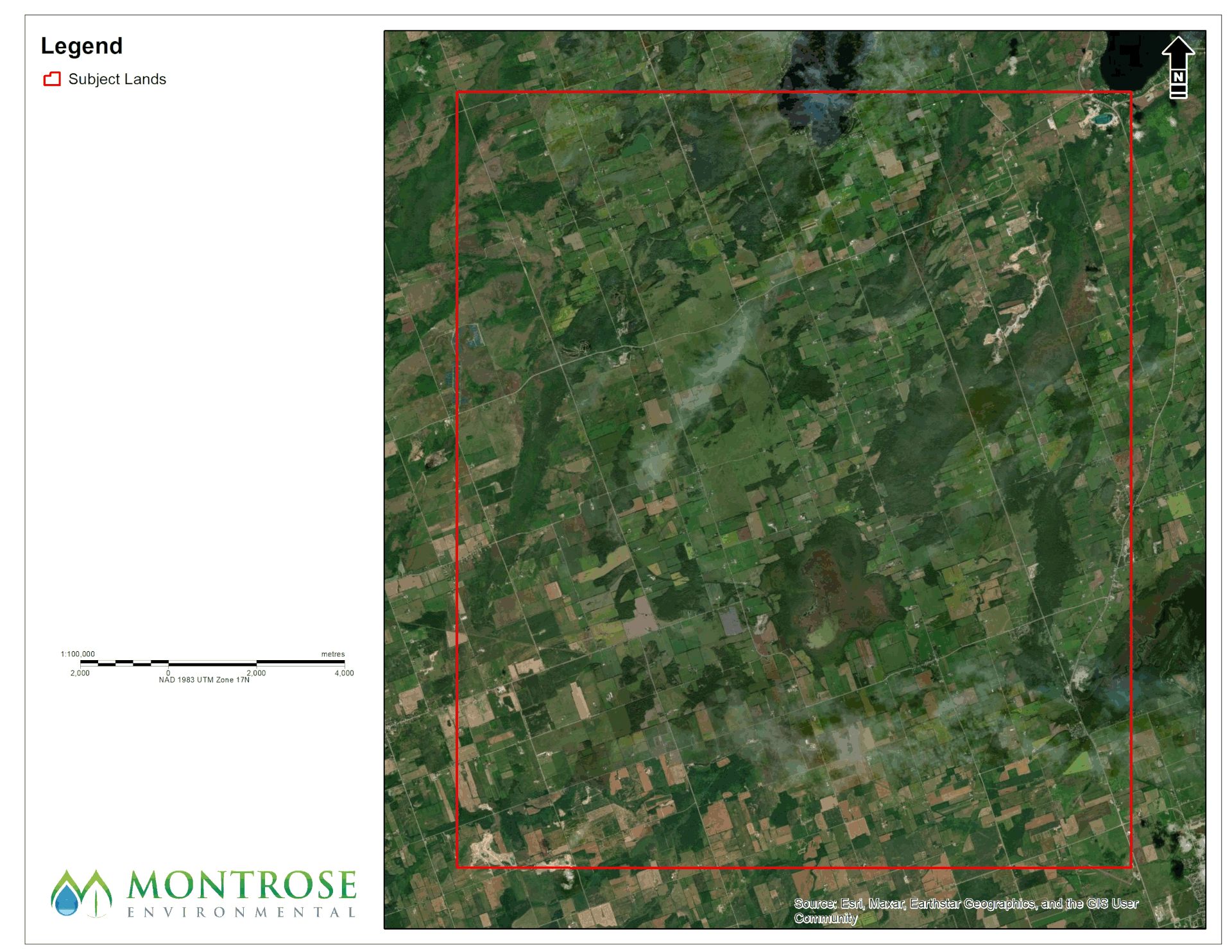
Optimizing Environmental Constraints Mapping for Renewable Energy Projects
July 16, 2025
By: Meghan Hellman
As countries move towards net zero and look for ways to decarbonize, investment and development in renewable energy sources such as solar and wind power are seeing steady growth. Development of these energy projects is largely occurring in greenfield (undeveloped) areas where the siting of infrastructure is critical to minimize project impacts and risk. In these early-stage environments, infrastructure needs to be carefully planned from the ground up, so where and how you site a project can make or break its success.
Poor siting choices can lead to permitting setbacks, unexpected environmental or technical hurdles, and rising costs. On the other hand, a well-informed understanding of siting constraints, potential limitations, and data confidence during all project stages can streamline approvals, reduce risk, and keep development timelines and budgets intact.
This blog post provides an overview of a practical site-mapping approach for greenfield renewable energy projects, highlighting how a comprehensive understanding of project constraints supports cost-effective implementation and risk management.
Navigating Regulatory Variability
The level of detail required for siting constraint identification and mapping varies between provincial jurisdictions and based on the specific permitting pathway for a project. Often, regulatory documents, directives, and Acts don’t clearly outline when or how this work should be completed. This creates a gap that developers must bridge themselves based on the project’s unique requirements, their risk tolerance, and the regulatory environment in which they’re operating.
Through partnership with the clients we support at Montrose, we have proven that understanding constraints at the start of development planning—and at the right level of detail and data confidence—sets the foundation for project success. When done effectively, this process helps ensure that:
- the project avoids or minimizes environmental and social impacts,
- appropriate information is available for stakeholder engagement, and
- permitting requirements are met efficiently, reducing the risk of regulatory delays.
Effective Constraint Mapping: From Desktop to Field Verification
Siting constraint analysis isn’t a one-size-fits-all process. The key to a successful analysis is a phased approach that balances the need for early insight with the evolving understanding of a project’s specifics.
Starting with desktop identification, mapping, and field verification—while leveraging publicly available and open-source spatial data—we can gain a broad view of the landscape, providing a fifty-thousand-foot view as a starting point. From there, the analysis can be refined as the project advances, integrating more detailed and field-verified data to develop a more accurate and actionable understanding of constraints.
A key part of this process is what we refer to as a red light/green light analysis – a GIS-based overlay method that helps identify which areas are developable and which are not. We have used this scalable approach for renewable projects ranging in size from 25 to 450+ MW in capacity – and it continues to support project teams in quickly assessing suitability and prioritizing land within broader project areas.

These results inform project design, support land acquisition decisions, and reduce the risk of running into obstacles during permitting. Constraint layers are centrally managed and refined as new data becomes available, allowing clients to adjust with confidence as their project evolves and more detailed information becomes available.
Collaborative Expertise that Drives Efficiency
Montrose has a skilled team of multidisciplinary experts who regularly work with project proponents to interpret constraints data, understand its limitations, and advise when further investigation or refinement is needed. Whether it’s recognizing where desktop data lacks resolution or identifying when fieldwork is essential for boots-on-the-ground verification, we bring a practical, insight-driven approach to every project.
We’ve repeatedly seen how timely, targeted constraint mapping and suitability modelling help reduce uncertainty, improve permitting readiness, and lower overall design and development costs.
Looking for support on your renewable energy project?
Let’s talk. Montrose assists renewable energy clients at every stage of project development and operations. Learn more about our Renewable Energy Solutions.
Continue Reading
 Meghan Hellman
Meghan Hellman
Sector Lead – Power (Canada)
Meghan Hellman is a Professional Agrologist with over 18 years of experience in environmental consulting. She is a Senior Ecologist and the Power Sector Lead for Montrose’s Canadian consulting and engineering division. Meghan has supported various environmental projects, including biophysical assessments, renewable energy report submissions, environmental evaluations, environmental impact assessments, conservation, and reclamation plans, and wetland identification and delineation work in support of Water Act applications. In addition to her technical work, she is a project manager for various sector clients and guides them through the regulatory and permitting process in support of project development.




